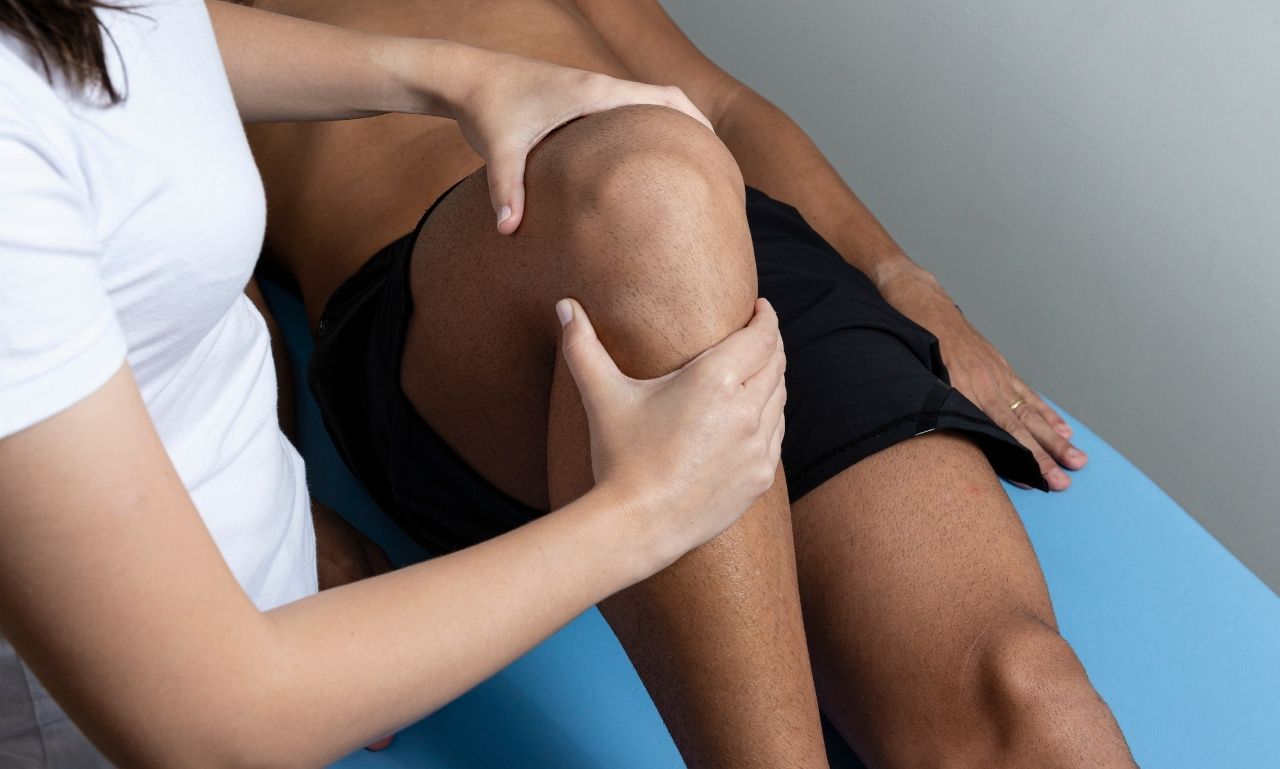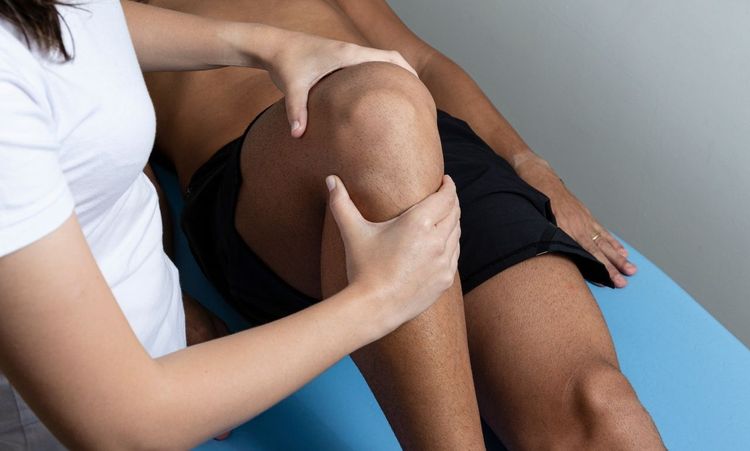Reaching the 5-month mark after knee replacement surgery is a significant milestone in your recovery journey. At this stage, you may wonder what progress to expect, how to fine-tune your physical therapy routine, and which activities can support your continued healing. From improved mobility and strengthening exercises to common challenges and mistakes to avoid, this guide covers everything you need to know about what to expect 5 months after knee replacement surgery. Let's examine your recovery journey and help you maximise this important phase!
Physical Therapy

At the 5-month mark, you're likely well into your physical therapy routine. Your therapist is your recovery BFF, guiding you through exercises to strengthen your knee and improve your range of motion.
Expect to be working on:
- Quadriceps and hamstring strengthening
- Range of motion exercises
- Stationary biking
- Walking longer distances
Your hard work pays off as you notice increased mobility and reduced pain. Go you! 🙌
Complications
While complications are rare, it's important to stay vigilant. Contact your doctor if you experience:
- Severe pain or swelling
- Signs of infection like redness, warmth, or fever
- Shortness of breath (could indicate a blood clot)
Don't hesitate to contact your healthcare team—they are there to support you every step of the way.
Best Exercises 4 Months After Total Knee Replacement
By the 4-month, you're ready to kick your knee rehab up a notch! It's time to get strategic with exercises that build strength, improve flexibility, and get you back to doing what you love.
It can feel daunting to push yourself after surgery but trust me - your body is capable of incredible things! You'll be amazed at how far you've come with the right moves and patience. Let's break down the top exercises to focus on:
1. Quadriceps Strengthening
Your quads are the powerhouse muscles that support your knee, so giving them extra TLC is key! Straight leg raises, and short arc quads are your new best friends.
Here's how to do them:
- Lie on your back with your surgical leg straight and your other leg bent.
- Slowly lift your surgical leg about 6 inches off the ground, holding for 5-10 seconds.
- Lower back down and repeat for 10-15 reps, 2-3 times daily.
2. Hamstring Strengthening
Strong hammies balance out your quads and keep your knee stable. Prone hamstring curls and bridges are excellent choices.
Try this:
- Lie on your stomach with your legs straight.
- Slowly bend your surgical knee, bringing your heel toward your buttocks.
- Hold for 5-10 seconds, then lower back down.
- Repeat for 10-15 reps, 2-3 times a day.
3. Range of Motion Exercises
Improving your knee's ability to bend and straighten is crucial for daily activities like walking, climbing stairs, and getting in and out of chairs. Heel slides and seated knee flexion are your tickets to better mobility!
Here's a simple heel slide:
- Lie on your back with your legs straight.
- Slowly bend your surgical knee, sliding your heel toward your buttocks.
- Hold for 5-10 seconds, then slide back to the starting position.
- Repeat for 10-15 reps, 2-3 times a day.
4. Stationary Biking
Stationary cycling is a fantastic low-impact way to boost cardiovascular health and knee mobility. Start with short 5-10 minute sessions and gradually increase as you feel comfortable.
5. Walking
You've been working hard in physical therapy, and now it's time to take those new knee skills out into the world! Walking is a simple yet powerful way to keep your knee joints healthy and strong. Begin with short strolls around your neighbourhood and work up to longer durations.
Your body heals at its own pace, so stay motivated and honor your small achievements. Accept all your minor achievements because steady effort leads to results.
When you need help with your recovery, you should contact your physical therapist or doctor. They support you throughout your entire journey and bike ride experience.
Things To Avoid After Knee Replacement

While it's tempting to jump back into your pre-surgery activities, some things are best avoided to protect your healing knee:
- High-impact sports like running or jumping
- Kneeling or squatting deeply
- Lifting heavy objects
- Twisting or pivoting on your surgical leg
Ease into activities gradually, and consult your doctor or physical therapist if you have questions about what's safe for your situation.
How Far Can You Walk 6 Months After Knee Replacement?
Every recovery journey is unique, but most people can walk a mile or more in six months! Regular walking improves knee function and boosts overall health.
Start with short, frequent walks and gradually increase the distance and duration as your knee allows. Celebrate each milestone along the way—you've earned it!
Why Does My Knee Still Hurt 5 Months After Surgery?
The knee usually shows pain and swelling during the first half year after surgery. Do not disregard severe or worsening pain because you had surgery.
Potential causes of persistent pain include:
- Scar tissue buildup
- Muscle weakness or tightness
- Infection
- Implant loosening or wear
See your surgeon for a follow-up visit when the pain stops you from doing your everyday activities, and let them revise your recovery steps.
What Should a Knee Replacement Feel Like After 6 Months?
At the 6-month, your new knee should feel more like a natural body part. Most people report significant improvements in pain and mobility compared to their pre-surgery state.
You may still experience some stiffness or achiness, especially after prolonged activity, but this should continue to improve with time and exercise. Don't hesitate to talk to your doctor if you're not seeing progress.
Why Is My Knee Still Stiff 6 Months After Knee Replacement?
Some stiffness is par for the course as your knee adjusts to its new hardware. However, excessive stiffness could be a sign of:
- Scar tissue formation
- Inadequate rehabilitation
- Infection
- Implant misalignment
When exercise does not ease stiffness or reduce joint movement, see your healthcare provider to determine the medical reason and update your treatment plan.
Top 5 Mistakes After Knee Replacement
Mistake #1 - The Exercise Conundrum
Finding the perfect balance of exercise after surgery can be challenging. Proper exercise amounts are required for a slow recovery. Pushing your knee too hard puts unnecessary strain on your healing joint. You need to discover the correct amount of exercise for your needs.
Don't Be Too Gentle With Your Movements
You need to respect your body's needs, but doing so too strictly will slow down your improvement. Do your physical therapy exercises daily and increase your repetitions to repair your ability to move actively.
Don't Over-Do It
Conversely, pushing too hard too soon can lead to setbacks. Increase activity levels slowly and pay attention to any pain or swelling. If an exercise feels like too much, back off and consult your physical therapist for modifications.
Don't Abandon Your Knee Exercises
It's easy to slack off on your rehab routine as you start feeling better, but consistency is crucial for long-term success. Stick with your prescribed exercises even on days when motivation is low. Your future self will thank you!
Mistake #2 - Ignoring Red Flags During Surgical Recovery
While some discomfort is expected after surgery, specific symptoms warrant immediate attention:
- Fever over 101°F
- Severe or worsening pain
- Increased redness, swelling, or drainage from the incision
- Calf pain or swelling (could indicate a blood clot)
Don't ignore these warning signs; immediately contact your doctor to catch them and treat any complications early.
Mistake #3 - Not Staying in Contact With Your Knee Doctor
Your surgeon must stay connected to help you recover, so keep talking. Call your doctor right away if you have questions or need help but attend all scheduled appointment times.
Meeting regularly with your doctor helps you stay on track in your recovery while letting you start new treatment steps when needed. You and your doctor work together to keep your knee healthy, so stick to this plan.
Mistake #4 - Discarding the Post-Operative Plan

That folder of recovery instructions from your surgeon isn't just a paperweight - it's your roadmap to recovery success!
Follow your doctor's orders for:
- Wound care
- Medication management
- Activity restrictions
- Follow-up appointments
Deviating from the plan can slow your healing or lead to complications. If any part of the plan is unclear or not working for you, discuss it with your healthcare team to find a solution.
Mistake #5 - Rushing Back to Your Normal Life
While it's natural to want to resume your usual activities as soon as possible, rushing the process can do more harm than good.
Ease back into work, hobbies, and social engagements gradually. Listen to your body and respect its need for rest and recovery time. Overdoing it can lead to pain, swelling, or even injury to your healing knee.
Remember, slow and steady progress is still progress! Celebrate each small victory along the way, and trust you'll return to your full life in due time.
Conclusion
At your 5-month recovery milestone, you have achieved a significant milestone in your knee replacement journey. Stick with your progress and use your healthcare team and loved ones to support your healing process.
Also Read: Best Knee Brace to Prevent Hyperextension




